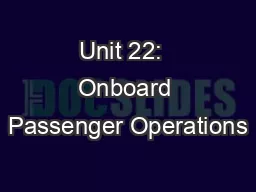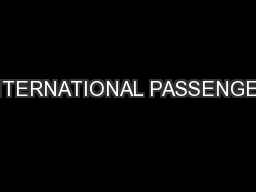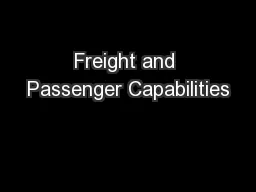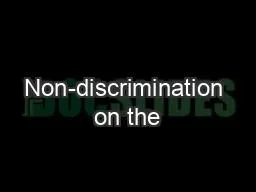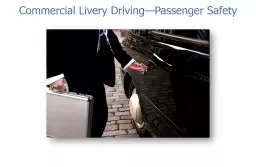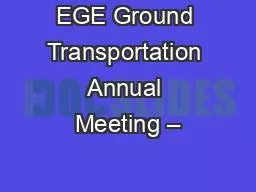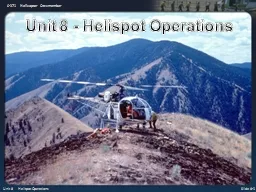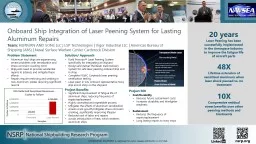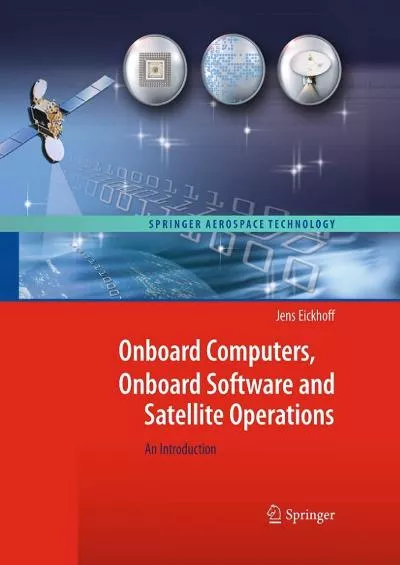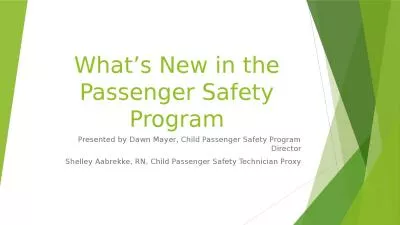PPT-Unit 22: Onboard Passenger Operations
Author : celsa-spraggs | Published Date : 2019-03-16
P3 Explain how onboard procedures and services are coordinated P4 Define the role of the senior cabin crew member Coordination of routine procedures and services
Presentation Embed Code
Download Presentation
Download Presentation The PPT/PDF document "Unit 22: Onboard Passenger Operations" is the property of its rightful owner. Permission is granted to download and print the materials on this website for personal, non-commercial use only, and to display it on your personal computer provided you do not modify the materials and that you retain all copyright notices contained in the materials. By downloading content from our website, you accept the terms of this agreement.
Unit 22: Onboard Passenger Operations: Transcript
Download Rules Of Document
"Unit 22: Onboard Passenger Operations"The content belongs to its owner. You may download and print it for personal use, without modification, and keep all copyright notices. By downloading, you agree to these terms.
Related Documents

